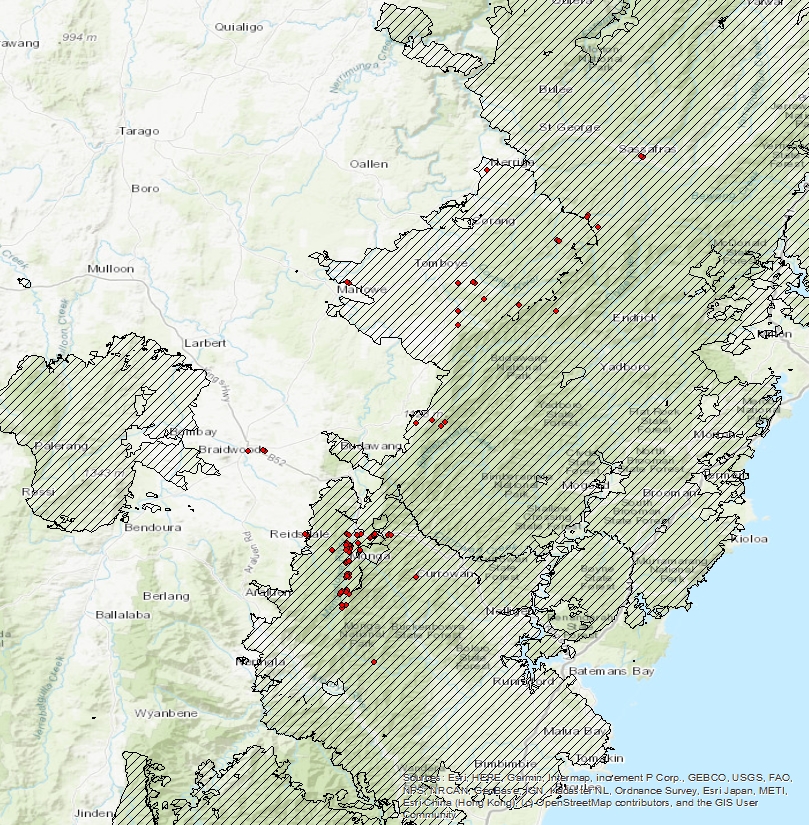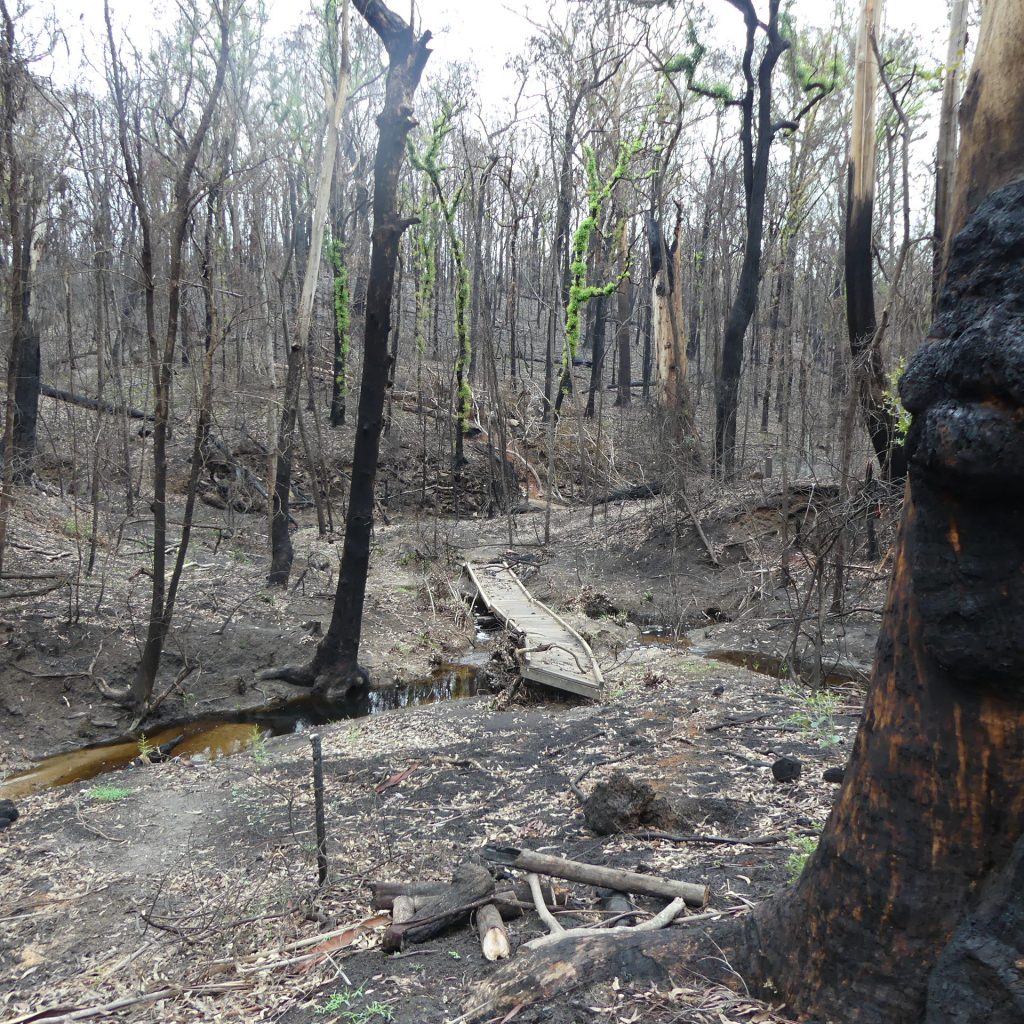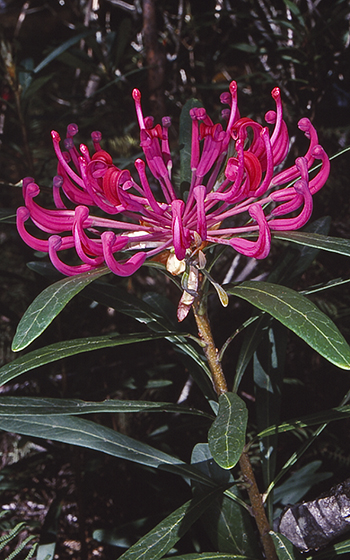The Eurobodalla Shire’s new Wallace Herbarium building escapes bushfires
The Eurobodalla region spans along the NSW south coast and encompasses cool temperate rainforest gullies, seaside dunes, sandstone heaths and tall sclerophyll (trees with hard, short leaves) forests, grasslands and an ancient Gondwana forest. The recent devastating bushfires burnt up to 80% of the Eurobodalla region, including many of the wetter habitats previously untouched by fire. A staggering 33% of the region is currently assessed as being burnt at the highest intensity, with the forest canopy fully affected.
The region is home to many local native species not found anywhere else including the beautiful Monga Waratah (Telopea mongaensis).
The Eurobodalla Regional Botanic Garden (ERBG) owned and operated by Eurobodalla Shire Council, located in Mogo State Forest just outside of Batemans Bay was severely damaged with many structures burned to the ground. It remains closed to the public. However, the new Wallace Herbarium building (completed in 2019), the ERBG Visitors Centre, the seed collection and the plant nursery survived.

The Herbarium and Visitor Centre were significantly upgraded and extended just before Christmas, including significant fire safety upgrades – these were immediately put to the test.
The Herbarium collection of nearly 15,000 plant specimens was largely built up under the leadership of Jenny Liney, who received an OAM for her outstandiong services to conservation and the environment.
Alongside her colleagues at the Botanic Garden, she is keen to assess the impact of the fires and monitor recovery of plants in affected areas.

“We are all worried about the impact of these recent fires. The ancient Gondwana forest in the NSW south coast is able to withstand occasional burning of a patchy nature, but it’s possible it might be wiped out by successive fires over a large area. We’re just not sure and need to start assessing the impact,” said Jenny.
Herbarium data updated – now accessible, and research-ready to help assess damage
The full impact of the recent fires on the plants and animals of the Eurobodalla region is yet to be established. The species information and occurrence records that the Wallace Herbarium holds will play a crucial role in assessing the damage.
The Herbarium team recently upgraded the data in order to satisfy the AVH data quality checks. Now, the data is publicly accessible, and ready for researchers, land managers, and the ERBG team, through the Australasian Virtual Herbarium (AVH), a hub of the Atlas of Living Australia.
“Being able to use and view the data in the AVH is invaluable – taxonomists search the AVH to understand what specimens have been collected for a species – unless we are on the AVH our collection would not be on their radar,” said Curator Tricia Kaye.
“The ALA, and the AVH, provide us and our users with invaluable spatial tools to map and analyse data, and will play a crucial role in assessing impact, managing bush recovery and identifying areas of conservation priority.”

Australia-wide species data enhances knowledge of plant distribution
A number of species in the Eurobodalla region are at the southern edge of distribution – this includes the Monga waratah and other threatened plants. Understanding species variation at the edges is often crucial to understanding species as a whole. For the Herbarium team, being able to view their data in the AVH with data from other collections helps to understand where there are gaps and where new collections should be targeted.
“Widespread severe and more frequent fires in this coast region could see the demise of many species including the unique Monga waratah which occurs in a very limited area at the fringes of the rainforest, said Tricia.”
“The long-term impacts need to be studied, along with identification of any areas of special interest that need to be protected from this changed fire pattern – consolidated herbarium data will play a crucial role in understanding change and how to adapt to it.”
About the Australasian Virtual Herbarium (AVH)
The AVH is a specialised subset of the ALA, it brings together more detailed data on plant collections. To date, the AVH has been largely drawn from the major capital city herbaria, which necessarily give a broader picture. Regional collections like the Wallace Herbarium fill in the gaps, providing more detailed coverage over space and time.

“Often more accurate than broader collections, regional data such as ours from the NSW South Coast, can be used to update data from broader collections, and target areas of special interest,” said Tricia.
More information:
- To view the data in the Australasian Virtual Herbarium, view the Wallace Herbarium collection.
- Visit the Eurobodalla Botanic Garden website